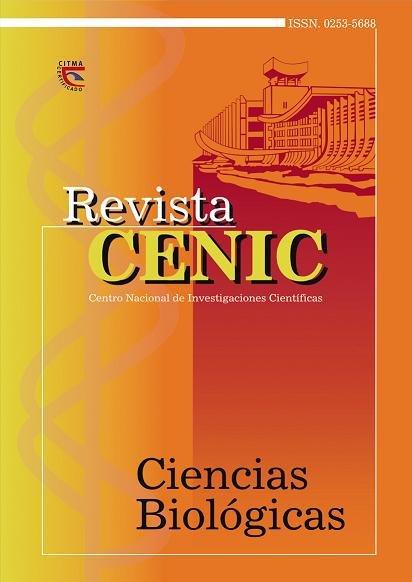Actividad antihelmíntica de los extractos acuosos de Portulaca oleracea L. sobre la Lombrices terrestris
Abstract
In the last years, the traditional medicine has reached an outstanding progress in the underdeveloped countries as a direct consequence of medicine absence and at the same time the necessity to reckon upon therapeutic alternatives for treatment of different physiological and pathological conditions. The anthelmintic activity of the aqueous extracts at 10 % in the different parts
of the Portulaca oleracea L ., commonly known as purslane was evaluated, as well as in the whole plant, according to the method developed in 1967 by Gaind and Bundhiraj. Lombricus terrestris from the Californian red genre, coming from the Vegetal Sanity Center of Santa Clara, Villa Clara, Cuba, was used as an experimental model, using 1% piperazine hexahidrate solution as reference substance. The paralysis times, obtained through the mobility records of the worms for every one of the evaluated extracts were: (7.07 ± 2 .71) min to the whole plant, (8 .7 ± 1 .98) min to the root, (15 .79 ± 5 .09) min to the stalk and (17 .52 ± 9.70) min to the leaves. All the studied extracts have shown anthelmintic activity, proving scientifically the reports relating to the use of them as vermifuge. The root turned out to be the part of the plant with the highest effectiveness. The mobility records obtained by means of the aqueous extracts were like the ones obtained by means of the piperazine solution, so the hypothesis that they act for a similar action mechanism could be attempted, up to the level on the motive plaque, probably as a blockers to the acetylcholine.
Downloads

Downloads
Published
How to Cite
Issue
Section
License
Copyright (c) 2000 Copyright (c) 2000 Revista CENIC Ciencias Biológicas

This work is licensed under a Creative Commons Attribution-NonCommercial-ShareAlike 4.0 International License.
Los autores que publican en esta revista están de acuerdo con los siguientes términos:
Los autores conservan los derechos de autor y garantizan a la revista el derecho de ser la primera publicación del trabajo al igual que licenciado bajo una Creative Commons Atribución-NoComercial-CompartirIgual 4.0 Internacional que permite a otros compartir el trabajo con un reconocimiento de la autoría del trabajo y la publicación inicial en esta revista.
Los autores pueden establecer por separado acuerdos adicionales para la distribución no exclusiva de la versión de la obra publicada en la revista (por ejemplo, situarlo en un repositorio institucional o publicarlo en un libro), con un reconocimiento de su publicación inicial en esta revista.
Se permite y se anima a los autores a difundir sus trabajos electrónicamente (por ejemplo, en repositorios institucionales o en su propio sitio web) antes y durante el proceso de envío, ya que puede dar lugar a intercambios productivos, así como a una citación más temprana y mayor de los trabajos publicados (Véase The Effect of Open Access) (en inglés).














